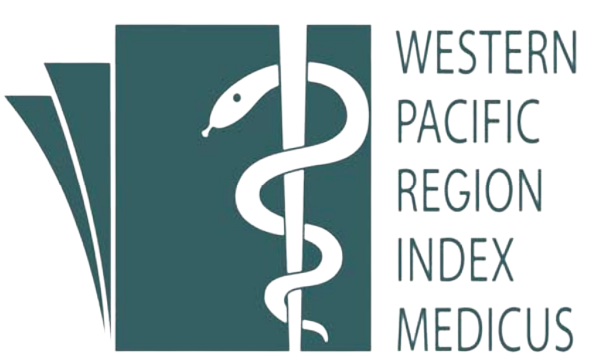Tóm tắt
The rising preference for hyaluronic acid fillers in aesthetic rejuvenation stems from their dual advantage of delivering immediate anti-aging effects and exerting beneficial biological actions with minimal invasiveness. Although the medical advantages of fillers for enhancing appearance and combating the effects of facial aging are widely acknowledged, there have been numerous instances of fillers being used improperly in rejuvenation procedures. The presence of these events can result in enduring consequences that are frequently disregarded during the identification of “Facial overfilled syndrome (FOS)”. Early recognition of FOS is crucial, with key symptoms including a heavy mid-to-lower face, “setting sun” eyes, a broadened nose, a round and over-protruding forehead, and a pointy chin.
The review is to describe the anatomy of facial aging, analyze the reasons and symptoms of facial overfill syndrome, and recommend possible treatment choices. Utilizing small-dose point injection techniques or Canula injection techniques guarantees accurate classification and suitable dosage, while also providing early education to clients regarding this issue.
It is essential to enhance the safety and aesthetics of patients, avoid the development of facial overfill syndrome, and establish a suitable method for patient rejuvenation. It is crucial to highlight the demand for education in comprehending and mastering filler-based cosmetic operations for physicians.
| Đã xuất bản | 28-04-2025 | |
| Toàn văn |
|
|
| Ngôn ngữ |
|
|
| Số tạp chí | Tập 15 Số 2 (2025) | |
| Phân mục | Tổng quan | |
| DOI | 10.34071/jmp.2025.2.1 | |
| Từ khóa | facial overfilled syndrome, hyaluronic acid, and fillers. |

công trình này được cấp phép theo Creative Commons Attribution-phi thương mại-NoDerivatives 4.0 License International .
Bản quyền (c) 2025 Tạp chí Y Dược Huế
Cotofana S, Fratila AA, Schenck TL, Redka-Swoboda W, Zilinsky I, Pavicic T. The Anatomy of the Aging Face: A Review. Facial Plast Surg. 2016;32(3):253-60.
Wong CH, Mendelson B. Newer Understanding of Specific Anatomic Targets in the Aging Face as Applied to Injectables: Aging Changes in the Craniofacial Skeleton and Facial Ligaments. Plast Reconstr Surg. 2015;136(5 Suppl):44s-8s.
Kim SJ, Kim SJ, Park JS, Byun SW, Bae JH. Analysis of Age-Related Changes in Asian Facial Skeletons Using 3D Vector Mathematics on Picture Archiving and Communication System Computed Tomography. Yonsei Med J. 2015;56(5):1395-400.
Kapoor KM, Saputra D, Porter C, Colucci L, Stone C, Brenninkmeijer E, et al. Treating Aging Changes of Facial Anatomical Layers with Hyaluronic Acid Fillers. Clinical, cosmetic and investigational dermatology. 2021;14:1105-18.
Wan D, Amirlak B, Giessler P, Rasko Y, Rohrich RJ, Yuan C, et al. The differing adipocyte morphologies of deep versus superficial midfacial fat compartments: a cadaveric study. Plast Reconstr Surg. 2014;133(5):615e-22e.
Mitz V, Peyronie M. The superficial musculo-aponeurotic system (SMAS) in the parotid and cheek area. Plast Reconstr Surg. 1976;58(1):80-8.
Brandt MG, Hassa A, Roth K, Wehrli B, Moore CC. Biomechanical properties of the facial retaining ligaments. Arch Facial Plast Surg. 2012;14(4):289-94.
Campbell MJ, McComas AJ, Petito F. Physiological changes in ageing muscles. J Neurol Neurosurg Psychiatry. 1973;36(2):174-82.
Bertossi D, Nocini P, Rahman E, Kapoor KM, Maio M. Non‐surgical facial reshaping using MD Codes. Journal of Cosmetic Dermatology. 2020;19.
Richard MJ, Morris C, Deen BF, Gray L, Woodward JA. Analysis of the anatomic changes of the aging facial skeleton using computer-assisted tomography. Ophthalmic Plast Reconstr Surg. 2009;25(5):382-6.
Mendelson B, Wong CH. Changes in the facial skeleton with aging: implications and clinical applications in facial rejuvenation. Aesthetic Plast Surg. 2012;36(4):753-60.
Kapoor KM, Saputra DI, Porter CE, Colucci L, Stone C, Brenninkmeijer EEA, et al. Treating Aging Changes of Facial Anatomical Layers with Hyaluronic Acid Fillers. Clin Cosmet Investig Dermatol. 2021;14:1105-18.
Maio M, Brenninkmeijer E, Nurlin I, Colucci L, Sanchez T. Applying the MD Codes™ to Treat Emotional and Social Attributes with HA Fillers: A Retrospective Serial Case Study. Clinical, Cosmetic and Investigational Dermatology. 2023;Volume 16:3441-53.
Lim T. Facial Overfilled Syndrome. Dermatologic Clinics. 2024;42(1):121-8.
Schelke L, Harris S, Cartier H, Alfertshofer M, Doestzada M, Cotofana S, et al. Treating facial overfilled syndrome with impaired facial expression—Presenting clinical experience with ultrasound imaging. Journal of Cosmetic Dermatology. 2023;22(12):3252-60.






